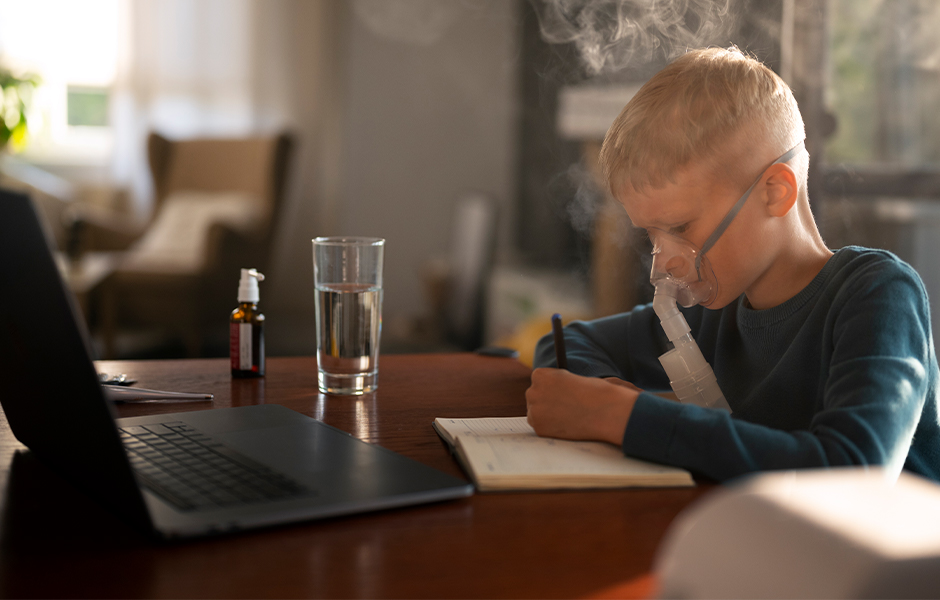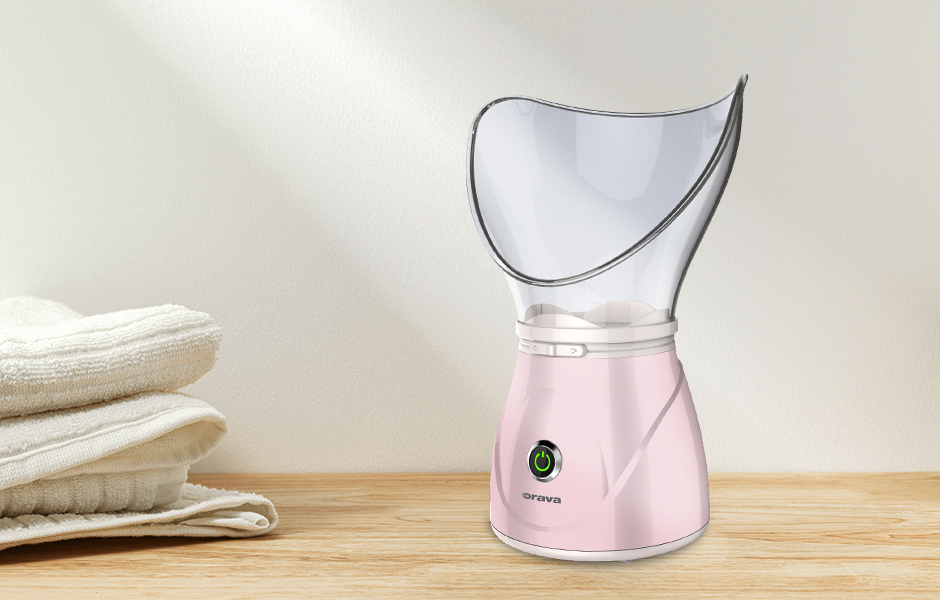Do you know why and how to inhale properly?
Inhalation in the fight against diseases and allergies - what you should know
With the arrival of autumn and the return to school and work, it's time for viruses and bacteria to attack us again, and this unpleasant state of affairs will last more or less until spring. Runny noses, colds, flu, coughs and sinus infections and even respiratory infections are upon us. Do you know how to prevent them effectively and how to win the battle against them?
Young and old - inhale!
Some advice is notoriously familiar: eat as many seasonal vegetables and fruits as possible, do sports or take a walk in the fresh air every day, ideally in nature, get enough quality sleep, and toughen up. All this strengthens the immune system, which, if it is in good shape, can fight off the first sign of illness and fight it before it develops into complications. In the prevention and treatment of respiratory diseases, however, home inhalation of therapeutic solutions has its irreplaceable place as a prevention of illnesses, but also when the disease is in full swing and we are troubled by a runny nose, shortness of breath, choking cough... or an allergy comes on in full force. Then the mucous membranes of the throat, nose, sinuses and airways are dry and irritated and need to be moistened, soothed and the thick mucus diluted so that it can be more easily blown out and coughed up. Inhalation, one of the oldest methods of preventing and treating breathing difficulties, comes into its own. I'm sure you also remember how mothers and grandmothers would send us to sit over a pot of salt water or medicinal herbs, cover us with a blanket, and let us sweat in our own juices for 10 minutes or more. It helped, even though the sweat was dripping off us through the chickpeas. Nowadays, their role is mainly played by facial saunas, which, in a more modern way and with a minimum of perspiration, provide inhalation of healing solutions in the form of a fine aerosol. In addition to these, there is a higher level - vacuum and compressor inhalers, which doctors often recommend to their patients. Inhaling with an inhaler is a natural and very gentle non-invasive treatment, during which the drug is quickly and targeted to where it is needed and does not (unlike syrups and pills) stress other systems in the body, such as the digestive tract, in addition to the respiratory system. It is not difficult or uncomfortable to put on a face mask or mouthpiece and inhale in this way - children, adults and seniors can do it. The less patient and fidgety can listen to a story, film, podcast or audiobook for the 15 minutes it takes to inhale.

Sauna, ultrasonic or compression inhaler?
Face saunas have many advantages. Firstly, they open the pores and help get rid of impurities and toxic substances, which improves the appearance of the skin and helps fight acne. In addition, they improve blood circulation, which can increase the supply of nutrients to the skin and increase its elasticity. This is a great way to take care of your skin and feel beautiful and youthful. So why not give it a try and treat your face to some luxury and care? Your skin will thank you for it! If you decide to go for it, try the Orava FI-120 AP.

An ultrasonic inhaler works by breaking a drug dissolved in water into microparticles by ultrasonic waves into an aerosol containing many small particles. A small fan built into the inhaler takes care of the airflow. The ultrasonic inhaler is ideal for seasonal inhalation during flu or pollen season. It has quiet operation, low power consumption, but poorly handles oil-based emulsions and higher density drugs. It is therefore not suitable for long-term and frequent inhalation for people with more severe diagnoses such as cystic fibrosis, COPD or more severe asthma conditions.
Compressor inhalers can handle all types of medications and are therefore suitable for frequent and long-term use, even for more serious diagnoses. A nozzle connected to the compressor ensures the atomization of the therapeutic fluid into microscopic particles. In addition to routine inhalation in times of influenza viruses and allergies, they are therefore also suitable for those who need to inhale frequently, for long periods of time, and the medicines intended for this purpose are denser. Thus, people suffering from more severe asthma, COPD, cystic fibrosis, etc. will also benefit from it. Compressor inhalers have a higher atomizing power, but tend to be slightly heavier, more robust and noisier. Our tip is the Orava NE-31 compressor inhaler. It is designed for everyday home use - both short and long term, for all small and large patients. It is easy to operate and clean. The volume of the container for filling the therapeutic solution is 6 ml, it has a nebulizing power of 0.2 micrometers per minute and weighs only 1.3 kg for easy transport. It pleasantly surprises with an acceptable noise level of only 60 dB. It comes with a mouthpiece, two masks of different sizes for child and adult, which, thanks to the fastening strap, fit snugly on the face for maximum inhalation effect, and five spare filters. It can be yours for 45,90 euros, a fiver of additional spare filters can be bought for 4,90 euros.
How to inhale correctly
Inhaling is nothing complicated, but you need to follow a few rules to make the inhalation as effective as possible. Get comfortable in a place where you can sit upright for 10 to 15 minutes. A harder chair is ideal, certainly not a soft armchair or couch. These would tempt you to relax, but only with your back stretched out can you use your lungs to their maximum capacity. Prepare your inhalation solution and pour it into the container in the machine. Before inhaling, blow your nose thoroughly and cough up all mucus so that your airways are as clear and clear as possible. Put a mouthpiece in your mouth or put a mask over your face. It should fit snugly or the aerosol will get into your eyes. Switch on the inhaler. Take slow, deep breaths, hold your breath briefly if possible, and then exhale slowly. Slow, deep breaths in and out are important. Continue inhaling in this way for 10 to 15 minutes once a day for preventive inhalation and 2 to 3 times a day for therapeutic inhalation.
What therapeutic inhalation solution to use
You can inhale sea water, saline solution or mineral water, e.g. Vincentka, for normal preventive inhalation, but also for colds and colds. However, if your condition is more serious, contact your doctor and pharmacist so that they can recommend a suitable medicine that will give you relief as soon as possible and help to shorten the treatment of your illness.

Watch out for this
If the inhaler is used by the whole family, it is advisable for each family member to have their own inhaler - because of contamination - or at least their own mask. After use, be sure to disinfect the inhaler properly - wash the nebuliser in a solution of water and liquid soap and then disinfect it by boiling it in water for up to 10 minutes or in an autoclave (steam steriliser). Never boil the mask and mouthpiece in water or clean them in an autoclave, disinfect them thoroughly with cold disinfectant liquids recommended by your pharmacy. With normal use, the nebulizer should last at least 6 months, but if it is dusty or blocked with dried medication, replace it sooner. The inhaler filter should be changed after 30 hours of use or sooner if it is dirty.
